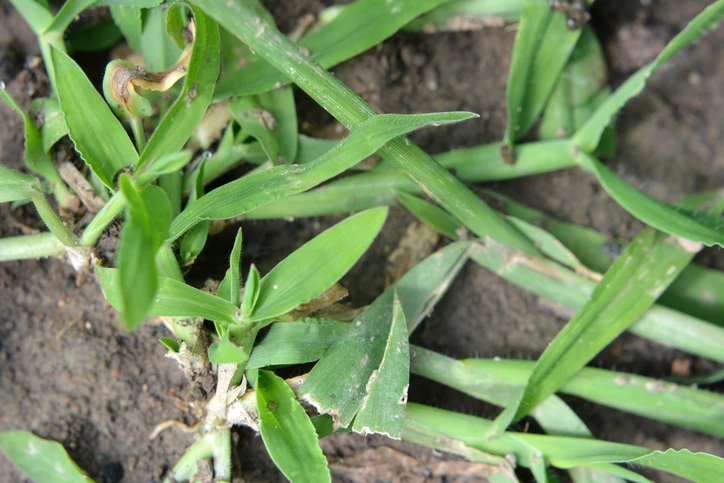What You Need to Know About Summer Weeds & Turf Care in Falls Church
Keep Summer Weeds Away from Your Lawn This Year
With all the care you put into your lawn, you may be wondering how it’s possible to still get so much weed growth. The answer is that everything comes down to when the weeds germinate, because not all will germinate at the same time. For that reason, it’s important to understand the common weeds in Falls Church, how to prevent unwanted germination, and how to avoid bringing new seeds onto your property.
5 Common Weeds in Growing Falls Church Lawns
Crabgrass
Crabgrass seeds germinate in the spring once soil temperatures reach 55-60 degrees Fahrenheit for multiple consecutive days. Unfortunately, due to the number of seeds crabgrass weeds produce, it takes multiple growing seasons to control with efforts such as:
- Increasing mowing height during the germination phases
- Properly applying fertilizer for balanced nutrition
- Reseeding in late summer or early fall
- Applying a preemergence herbicide before forsythia flowers drop
Remember that you’ll need to wait a few months after applying herbicide before reseeding. And it requires water for activation, which means that after you apply the herbicide, be sure to carefully water the lawn.
Bermudagrass
Since bermudagrass has many stolons and rhizomes, it can root in the soil and create new plants. This makes preemergence products ineffective. Staying on top of physically removing the weeds will help control the problem, along with postemergence herbicide (active ingredient: fenoxaprop) for large invasive growth. Applying herbicide to bermudagrass should happen in the late spring or fall to avoid damaging your lawn with the herbicide in the summertime.
Japanese Stiltgrass
With shallow roots, stiltgrass can be taken care of by hand removal in the shady areas you’ll find it. Adult plants should be pulled in the summer before they can drop seeds. If there is a large amount of growth, you can mow the stiltgrass to remove it and avoid the seeds.
Pro tip: Trim and prune plants that are shading areas where you have stiltgrass growing to bring more sunlight in.
Spotted Spurge
This is a summer annual weed, which grows in sparse turf, gardens, and gaps in patios. It secretes poisonous sap if stems or branches break, causing irritation to people and potential toxins in animals. One spotted spurge plant is able to produce 1,000 seeds, all of which lie dormant until soil temperatures reach 75-85 degrees Fahrenheit.
Seeds can produce only five weeks after germination. Since it grows low to the ground, spotted spurge is one of the few weeds that cannot be controlled with proper mowing practices. Applying a couple of inches of mulch is one method for stopping light from reaching the soil (which would germinate the seeds), and you can wear gloves to pull growth by hand. But the most effective control method is finding out why your turf is sparse and how you can bring it into better health to avoid further spotted spurge sightings.
Wild Violet
This is a very difficult weed to treat once it makes its way into your lawn, due to self-pollinating flowers below the leaves and even underground, dropping seeds. There are also underground stems that spread growth, making it more challenging. You will most likely need to treat it multiple times, but herbicides with triclopyr work.
Top Tips for Controlling Summer Weeds
Maintain a regular mowing schedule, and be aware of how short to cut your grass for optimal growth.
Cool-season grass should be between 3.5 and 4 inches tall, while warm-season grass should be around 1.5 to 3 inches tall. Remember not to cut more than a third of the grass height at a time to avoid “shocking” the turf.
When it comes to fertilizing, warm-season grass is the kind that benefits from the additional nutrients during summer. Cool-season grass doesn’t need fertilizer during the summer, especially if you leave the grass clippings behind after mowing, as they will provide nutrients.
Don’t hesitate to reach out with questions on turf care in Falls Church!
 Click to call
Click to call



